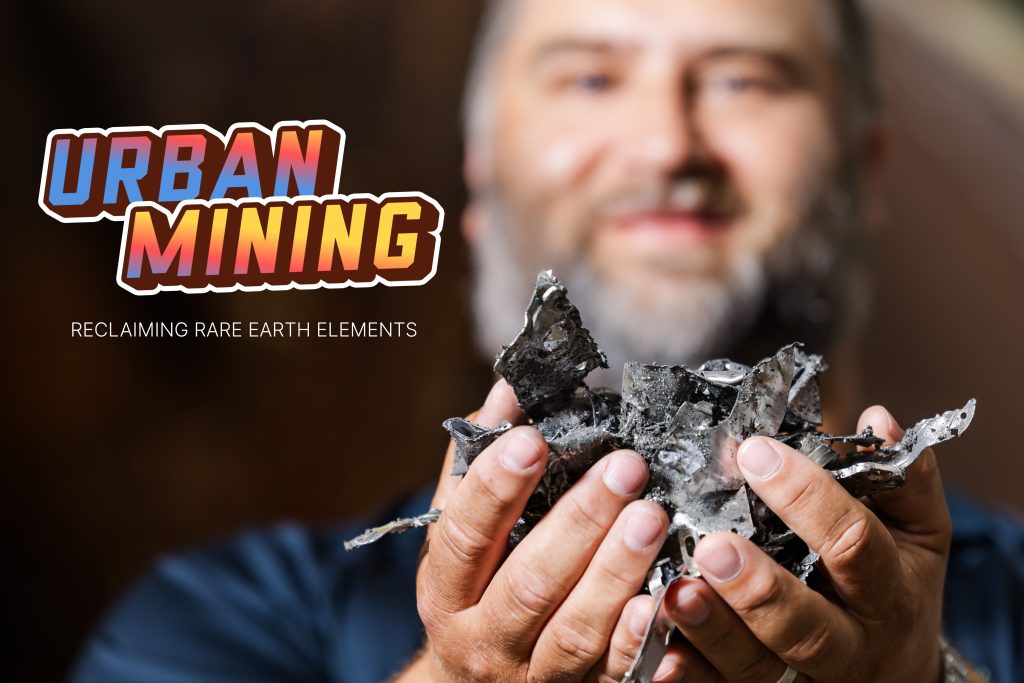At the edge of Boone, in a nondescript industrial building, a high-tech revolution is unfolding. Inside Critical Materials Recycling, Inc. (CMR), a small but growing team is pulling precious rare earth elements—crucial for everything from wind turbines to fighter jets—from an unlikely source: old hard drives.
“We’re not digging into the Earth,” says Dan Bina, President and CEO of CMR. “We’re digging into yesterday’s electronics. This is urban mining at work.”
Magnets in the Machines
Most people don’t realize that the small, shiny disks in computers contain powerful magnets—and those magnets contain rare earth elements like neodymium and dysprosium. In fact, about 2% of every hard drive’s weight comes from magnets. With millions of hard drives reaching end-of-life each year, the opportunity is massive.
CMR’s patented Acid-Free Dissolution Recycling (ADR) technology, developed at Ames National Laboratory at Iowa State University, uses a proprietary liquid solution to extract these valuable elements. “The liquid is the key,” Bina explains. “The solution does the leaching—it pulls the rare earths out of the hard drives without the environmental harm that comes from traditional mining.”
The process is clean, efficient, and surprisingly productive. From 215 kilograms of shredded hard drives, CMR can recover around 10 kilograms of rare earth mixture—later refined through further separation steps into high-purity metals.
Shaping the Supply Chain
CMR is already working with tech giants like Microsoft, receiving end-of-life drives and refining their valuable contents. Currently, their Boone facility can process up to 2 million hard drives annually. “That’s our ceiling right now,” Bina says, “but we’re planning for growth.”
Expansion plans are already in motion, first by scaling the current site, then branching out to new locations. The goal is to source even more drives—especially from hyperscale data centers—while growing partnerships to process magnets from other sources, such as wind turbines.
“A typical wind turbine can have as much magnet content as about 200,000 hard drives,” says Bina. “We’re developing the process now with local partners. That’s the next frontier.”
America’s Critical Need
The urgency is not just economic—it’s strategic. Over 90% of the global rare earth supply chain runs through China. And while the United States has a few rare earth mines, most of the materials still end up overseas for processing. Less than 3% of global rare earths are currently recycled.
“We need to develop our own ecosystems,” Bina says. “This isn’t just about recycling—it’s about security, innovation, and independence.”
That message has resonated. CMR holds an exclusive global license from the Iowa State University Research Foundation and has attracted support from early investors and key industry partners. As demand for rare earth elements is projected to jump from 100,000 tons in 2020 to over 700,000 tons by 2050, CMR is positioning Boone—and America—at the center of the solution.
The Big Picture
Drives come to CMR after first passing through traditional recyclers, who strip out copper, aluminum and circuit boards—those materials go to standard scrap markets. But the magnets? They stay in Boone, where they’re carefully reclaimed and refined.
After extraction, the rare earths still must be separated into individual elements and transformed into usable metals. It’s a complex process, but one that’s essential if the United States hopes to compete in industries from clean energy to national defense.
“The demand for rare earths will only grow,” says Bina. “And with only a few domestic mines, the best way forward is to make the most of what we already have—sitting in old devices, server farms, and turbines. We’re not just recycling; we’re rebuilding the supply chain from the inside out.”
Learn more about Critical Materials Recycling online at: www.CriticalMaterialsRecycling.com
